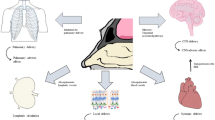Abstract
Therapeutic aerosol bioengineering (TAB) of Mycobacterium tuberculosis (MTb) therapies using inhalable microparticles offers a unique opportunity to target drugs to the site of infection in the alveolar macrophages, thereby increasing dosing in the lungs and limiting systemic exposure to often toxic drugs. Previous work by us used sophisticated, high content analysis to design the optimal poly(lactide-co-glycolic) acid (PLGA) microparticle for delivery of drugs to alveolar macrophages. Herein, we applied this technology to three different anti-MTb drugs. These formulations were then tested for encapsulation efficiency, drug-release, in vitro killing against MTb and aerosol performance. Methods for encapsulating each of the drugs in the PLGA microparticles were successfully developed and found to be capable of controlling the release of the drug for up to 4 days. The efficacy of each of the encapsulated anti-MTb drugs was maintained and in some cases enhanced post-encapsulation. A method of processing these drug-loaded microparticles for inhalation using standard dry powder inhaler devices was successfully developed that enabled a very high respirable dose of the drug to be delivered from a simple dry powder inhaler device. Overall, TAB offers unique opportunities to more effectively treat MTb with many potential clinical and economic benefits resulting.







Similar content being viewed by others
References
Muttil P, Wang C, Hickey A. Inhaled drug delivery for tuberculosis therapy. Pharm Res. 2009;26(11):2401–16.
Misra A, et al. Inhaled drug therapy for treatment of tuberculosis. Tuberculosis. 2011;91(1):71–81.
O’ Hara P, Hickey A. Respirable PLGA microspheres containing rifampicin for the treatment of tuberculosis: manufacture and characterisation. Pharm Res. 2000;17(18):956–61.
Sung J, et al. Formulation and pharmacokinetics of self-assembled rifampicin nanoparticle systems for pulmonary delivery. Pharm Res. 2009;26(8):1847–55.
Pandey R, et al. Poly(dl-lactide-co-glycolide) nanoparticle-based inhalable sustained drug delivery system for experimental tuberculosis. J Antimicrob Chemother. 2003;52(6):981–6.
Lawlor C, et al. The application of high-content analysis in the study of targeted particulate delivery systems for intracellular drug delivery to alveolar macrophages. Mol Pharm. 2011;8(4):1100–12.
Hirota K, et al. Delivery of rifampicin-PLGA microspheres into alveolar macrophages is promising for treatment of tuberculosis. J Control Release. 2010;142(3):339–46.
Suarez S, et al. Airways delivery of rifampicin microparticles for the treatment of tuberculosis. J Antimicrob Chemother. 2001;48(3):431–4.
Sharma R, et al. Inhalable microparticles containing drug combinations to target alveolar macrophages for treatment of pulmonary tuberculosis. Pharm Res. 2001;18(10):1405–10.
Yadav AB, Misra A. Enhancement of apoptosis of thp-1 cells infected with Mycobacterium tuberculosis by inhalable microparticles and relevance to bactercidal activity. Antimicrob Agents Chemother. 2007;51:3740–2. doi:10.1128/AAC.00925-07.
Pillai O, Panchagnula R. Polymers in drug delivery. Curr Opin Chem Biol. 2001;5(4):447–51.
Swai H, et al. Potential of treating tuberculosis with a polymeric nano-drug delivery system. J Control Release. 2008;132(3):e48.
Murray CJ, Styblo K, Rouillon A. Tuberculosis in developing countries: burden, intervention and cost. Bull Int Union Tuberc Lung Dis. 1990;65(1):6–24.
Anderson JM, Shive MS. Biodegradation and biocompatibility of PLA and PLGA microspheres. Adv Drug Deliv Rev. 1997;28(1):5–24.
Telko MJ, Hickey AJ. Dry powder inhaler formulation. Respir Care. 2005;50(9):1209–27.
Pilcer G, Amighi K. Formulation strategy and use of excipients in pulmonary drug delivery. Int J Pharm. 2010;392(1–2):1–19.
Heyder J, et al. Deposition of particles in the human respiratory tract in the size range 0.005–15 [mu]m. J Aerosol Sci. 1986;17(5):811–25.
Muttil P, et al. Inhalable microparticles containing large payload of anti-tuberculosis drugs. Eur J Pharm Sci. 2007;32(2):140–50.
McConville JT, et al. Use of a novel modified TSI for the evaluation of controlled-release aerosol formulations. I. Drug Dev Ind Pharm. 2000;26(11):1191–8.
Hindle M, Byron PR. Dose emissions from marketed dry powder inhalers. Int J Pharm. 1995;116(2):169–77.
Dunbar C, Kataya A, Tiangbe T. Reducing bounce effects in the Andersen cascade impactor. Int J Pharm. 2005;301(1–2):25–32.
Smyth H, Hickey A. Carriers in drug powder delivery: implications for inhalation system design. Am J Drug Deliv. 2005;3:117–32.
Seville PC, et al. Amino acid-modified spray-dried powders with enhanced aerosolisation properties for pulmonary drug delivery. Powder Technol. 2007;178(1):40–50.
Chew NY, et al. Effect of amino acids on the dispersion of disodium cromoglycate powders. J Pharm Sci. 2005;94(10):2289–300.
Daviskas E, et al. Effect of increasing doses of mannitol on mucus clearance in patients with bronchiectasis. Eur Respir J. 2008;31(4):765–72.
Gray V, et al. The inhalation ad hoc advisory panel for the usp performance tests of inhalation dosage forms. Pharmacopeial Forum. 2008;34(4):1068–74.
Rabbani NR, Seville PC. The influence of formulation components on the aerosolisation properties of spray-dried powders. J Control Release. 2005;110(1):130–40.
Jensen DMK, et al. Spray drying of siRNA-containing PLGA nanoparticles intended for inhalation. J Control Release. 2010;142(1):138–45.
Srichana T, Martin GP, Marriott C. Dry powder inhalers: the influence of device resistance and powder formulation on drug and lactose deposition in vitro. Eur J Pharm Sci. 1998;7(1):73–80.
Learoyd TP, et al. Modified release of beclomethasone dipropionate from chitosan-based spray-dried respirable powders. Powder Technol. 2008;187(3):231–8.
Hamishehkar H, et al. Influence of carrier particle size, carrier ratio and addition of fine ternary particles on the dry powder inhalation performance of insulin-loaded PLGA microcapsules. Powder Technol. 2010;201(3):289–95.
Acknowledgment
This study was funded by a Health Research Board Award(RP2006/152).
Author information
Authors and Affiliations
Corresponding author
Rights and permissions
About this article
Cite this article
Lawlor, C., O’Sullivan, M.P., Rice, B. et al. Therapeutic aerosol bioengineering of targeted, inhalable microparticle formulations to treat Mycobacterium tuberculosis (MTb). J Mater Sci: Mater Med 23, 89–98 (2012). https://doi.org/10.1007/s10856-011-4511-4
Received:
Accepted:
Published:
Issue Date:
DOI: https://doi.org/10.1007/s10856-011-4511-4




